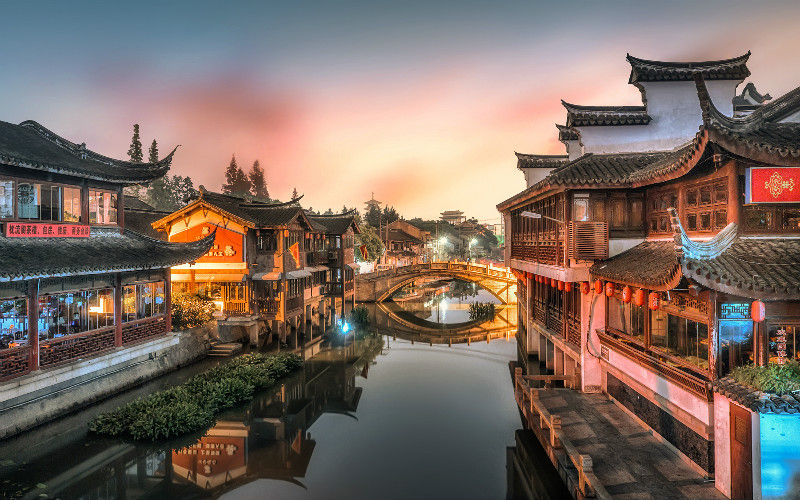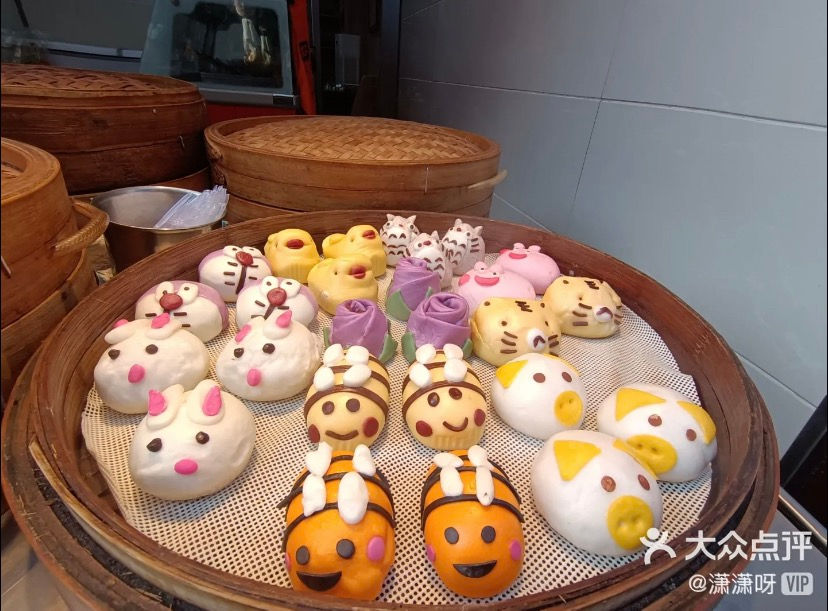[Virtual Travel] Shanghai Day 3
- Thrifty Solivagant

- Apr 2, 2021
- 3 min read
Updated: Apr 10, 2021

10am: Breakfast at Nanxiang Steamed Bun Restaurant 南翔馒头店
Nanxiang is considered one of the best soup dumpling (better known as “xiao long bao”) places in Shanghai. They get VERY crowded on weekends, probably also due to it being located near to Yu Garden and the City God Temple, two of those top tourist spots. They have a signature king size crab roe soup dumpling which you can slurp the broth up using a straw! Other than soup dumplings, their drunken chicken (南翔醉鸡) is quite well-loved as well.



Signature king-sized crab roe soup dumpling.

Regular-sized soup dumplings.

Nanxiang Drunken Chicken.
11am: Yu Garden 豫园, City God Temple of Shanghai 城隍庙, Yixiulou 挹秀楼 (1.5hrs)
The Yu Garden is believed to be built during the Ming Dynasty (1368-1644), more than 400yrs ago. It is the largest and the most prestigious garden of its era in Shanghai. The best time to visit the garden is during spring, when it is filled with green trees and blossoming flowers. Look out for tiny details amongst the garden’s beauty, like clay sculptures, brick cravings, calligraphy, and painting works.
The massive garden is divided into six zones, and consists of many pavilions and halls. Halls are used for holding meetings for state officials, scholars and religious leaders, back in Qing Dynasty (1644-1912). (to be cont)
The City God Temple of Shanghai is a Taoist temple built during the Ming Dynasty to protect the people in the city. The popularity of the temple led to many businesses being set up in the area, turning the surrounding streets into a busy marketplace. During the Cultural Revolution, the temple was closed and used for other purposes. In 1951, the temple was handed over to the Shanghai Taoist Association and made into a taoist centre. It was restored to its former use as a temple in 1994.

1pm: Lunch at Yang’s Dumpling 小杨生煎
Yang's Dumpling specialises in "sheng jian bao", dumplings pan-fried at the bottom and steamed for the top part - like potstickers, just different shape. Sheng Jian Bao is a popular breakfast item in Shanghai. Yang’s Dumpling was started in 1994 by Mrs Yang. Their tremendous popularity led them to have over 140 stores across China. What makes Yang’s so popular is that they used a much thinner dumpling wrapper, which results in having a much crispier bottom.
Starting out with just the standard pork dumplings, Yang’s Dumpling now offers fillings like black truffle chicken, fish with Sichuan pickles, crabmeat, shrimp, crayfish (小龙虾) and shepherd’s-purse (荠菜).


2:30pm: Shanghai Natural History Museum 上海自然博物馆 (2hrs)
After lunch, we head to Shanghai Natural History Museum, one of the largest museum of natural sciences in China. It exhibit dinosaurs and animals from around the world. It consists of a collection of 240,000 samples, including over 62,000 animal specimens, 135,000 plant specimens, 700 specimens of the Stone Age and 1,700 specimens of minerals. The largest exhibit is a 140-million-year-old dinosaur skeleton of Mamenchisaurus Hochuanensis Young et Zhao from Sichuan Province, which is over four-stories high. The museum also has two mummies and several human embryos.



5:30pm: Qibao Ancient Town 七宝古镇 + dinner
There are a few Ancient towns to go around Shanghai, and Qibao is the nearest. It is the only ancient town located in greater Shanghai and has a history of 1,000yrs old. It was built during the Northern Song Dynasty (960-1127) and grew to become a thriving business center during the Ming (1368-1644) and Qing (1644-1911) Dynasties. “Qibao” translates to “seven treasures”, as this town has seven treasures - Buddha, bell, lotus scriptures, sacred trees, gold chicken, jade axe and jade chopsticks.
Now as a tourist attraction, the area used to be the residence of painter and sculptor, Zhang Chongren. The Qibao Old Street is divided into two sections. The south part features local snacks, while the north part features mainly tourism souvenirs, including antiques, calligraphy and paintings. Avoid going on weekends as it can get really crowded! You will be able to find exotic street food like scorpions and crickets over here!





*Instagram is rarely used in China. Most of the photos will be from Dazhong Dianping (大众点评) instead - a China app where users can share their photos and videos, rate and review food and places.




![[Virtual Travel] Autumn in Seoul Day 10](https://static.wixstatic.com/media/f5ba3d_460331ede52344a58fad1608ea646e5b~mv2.jpeg/v1/fill/w_980,h_551,al_c,q_85,usm_0.66_1.00_0.01,enc_avif,quality_auto/f5ba3d_460331ede52344a58fad1608ea646e5b~mv2.jpeg)
![[Virtual Travel] Autumn in Seoul Day 9](https://static.wixstatic.com/media/f5ba3d_4d9ea6383636456da4d603ad76f2d29c~mv2.jpg/v1/fill/w_980,h_649,al_c,q_85,usm_0.66_1.00_0.01,enc_avif,quality_auto/f5ba3d_4d9ea6383636456da4d603ad76f2d29c~mv2.jpg)
![[Virtual Travel] Autumn in Seoul Day 6](https://static.wixstatic.com/media/f5ba3d_c2d1a5b1738043258ae2b91d416eefca~mv2.jpg/v1/fill/w_800,h_533,al_c,q_85,enc_avif,quality_auto/f5ba3d_c2d1a5b1738043258ae2b91d416eefca~mv2.jpg)
Comments